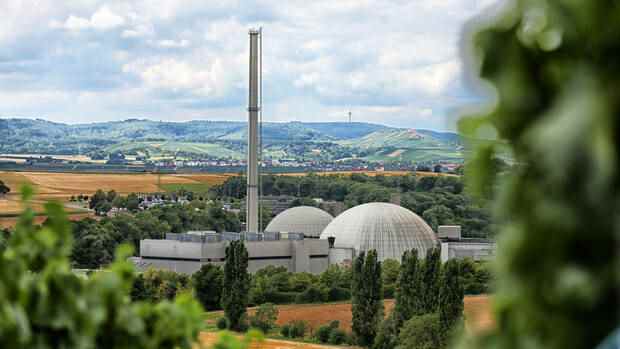It is remarkable that in Germany there is now talk of longer operating times for the remaining three nuclear power plants. In recent years, no one has had any interest in untying the laboriously negotiated compromise on the nuclear phase-out – not even the operators of the plants.
But times have changed. The EU is confronted with a dramatic energy supply crisis that will have a massive impact on the energy policy triangle of security of supply, economic efficiency and environmental compatibility for years to come. Of course it would be nicer if we could stick to the nuclear phase-out.
The construction of new nuclear power plants in countries such as France, Finland or Great Britain is proving to be problematic. Escalating costs can only be caught there because the respective governments put together aid packages worth billions.
New technological approaches in the use of nuclear power will take years to reach market maturity, so they are out of the question for overcoming the acute crisis situation. And finally: Renewable energies generate electricity at a fraction of the cost of new nuclear power plants.
It’s not about a nuclear renaissance
So there are good reasons to consider today’s nuclear power technology as a phase-out model. However, this basic assessment must be separated from the debate about extending the service life.
In Germany it is not about proclaiming a renaissance of nuclear power. It is about overcoming an acute crisis that is already shaking Germany to its foundations as an industrial location.
It will not be enough to let the last three nuclear power plants in Germany run in extended operation with the old fuel rods for a few more weeks after the end of the year. Rather, one should get used to the idea of installing new fuel rods so that the reactors can continue to produce electricity for several years.
In principle, what Federal Minister of Economics Robert Habeck preaches again and again must apply: Every single kilowatt hour counts. This applies to the kilowatt hours saved as well as to the ones produced. Saving wherever possible, producing with all means – also with hard coal and lignite, with a more efficient use of biogas – and also with the three remaining nuclear power plants. Secured power plant output that can be called up at any time, regardless of sun and wind, will be scarce in the coming months and years.
>> Read here: Drought and lack of energy alternatives – France’s nuclear power plants overheat rivers
Nuclear power plants can still be very useful here. Incidentally, the argument that is often put forward that nuclear power does not help to overcome the gas supply crisis is not valid. Of course, gas heating cannot be operated with electricity. But nuclear power reduces gas-fired power generation, leaving more gas for heating or for supplying industry.
Stretching does not help for the winter of 2023/24
Many pragmatic Greens, including Economics Minister Habeck, appear ready to pave the way for a term extension. So far so good. However, they are not – yet – ready to get serious about it.
Economics Minister Habeck seems to be ready to pave the way for a nuclear power plant runtime extension.
(Photo: dpa)
From the point of view of the Greens, at best, the extended operation of the remaining three nuclear power plants is acceptable at the moment. In the stretching operation, the existing fuel rods are – figuratively speaking – squeezed out for a few weeks longer.
We’re talking up to three months of continuously declining performance. That would mean that the three nuclear power plants would continue to be operated beyond December 31 until the end of the first quarter of 2023 – provided the traffic light coalition can agree on the necessary changes to the law and at the same time present a reliable concept for compliance with all safety regulations.
The administrative and legislative effort would be enormous, the benefits very limited. Because it’s not just about getting through next winter. The winter of 2023/2024 represents the greater challenge.
If it is possible to fill up the gas storage tanks by the start of the forthcoming heating season and at the same time to reduce gas consumption even further, then the winter can possibly be survived without too many injuries.
In the spring of 2023, however, storage would be at a record low. It will be more difficult to build up a solid cushion again before the start of the 2023/2024 heating season than it was this year. The drastic cuts in Russian gas supplies through the Nord Stream 1 pipeline only began this summer. The gap cannot be filled with liquefied natural gas (LNG).
In other words: The stretching operation does not help, the winter after next represents the greater hurdle. That is why the Greens must not make the installation of new fuel rods a taboo.
New fuel rods would mean continued operation of the three plants for three to five years – assuming that the procurement of the fuel rods is started now.
Only with this perspective should the operators be baited. It creates predictability and motivation. The stretching operation, on the other hand, is completely unattractive from their point of view. He’s a sham.
More: Stress test for the energy transition – Why the nuclear phase-out is no longer untouchable for the Greens.
